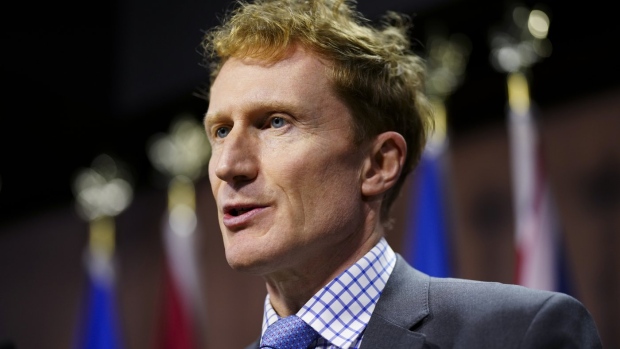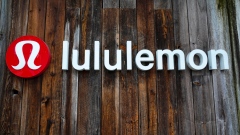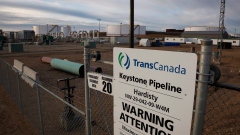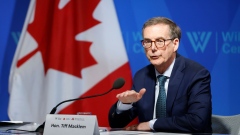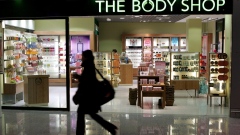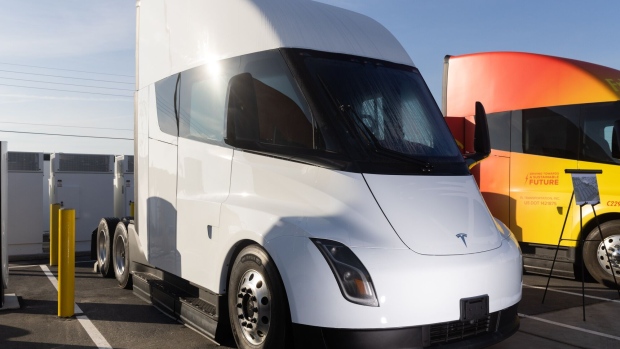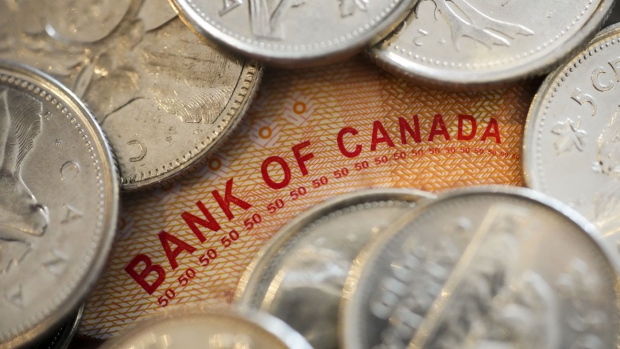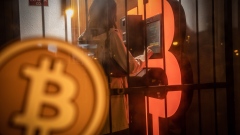Apr 7, 2021
California Sees Spring Awakening After Over a Year in Lockdown
, Bloomberg News

(Bloomberg) -- California, the first state to impose severe lockdown restrictions as the pandemic raged a year ago, is finally open for business again.
The most populous U.S. state is allowing most businesses to partially or fully reopen this month, potentially boosting the national economy, and all adults will be eligible for Covid-19 vaccines as of April 15. The Los Angeles school district, the nation’s second largest, is bringing students back to classrooms next week, as are San Francisco and San Diego.
With the vaccine program rolling out rapidly, more than 80% of the state’s population is in the orange, or moderate, tier based on its virus cases. That means bowling alleys, indoor pools and gyms are opening. Baseball season, the surest sign of spring, began with in-person home openers in San Diego, Anaheim and Oakland last week, and theme parks are beginning to unlock their gates. The economy is now set to fully reopen on June 15, provided that every resident who wants the vaccine can get it, and hospitalization rates remain stable and low.
The state, which has lost more 1.6 million jobs over the past year, got hit harder than most during the pandemic. That’s in part because California -- the world’s fifth-largest economy -- is heavily dependent on tourism, which collapsed as the virus spread. While labor market conditions have slowly improved, the state still has one of the highest jobless rates in the country, at 8.5% in February.
Los Angeles, with many multi-generational, working-class families packed into small homes or apartments, became a center for Covid-19 cases and deaths for a time. Governor Gavin Newsom imposed some of the tightest precautions in the country, which further crimped business.
Now, with the lowest Covid-19 test positivity rate in the U.S. at 1.7%, the state is shifting direction. Case counts are down and vaccinations are up -- with over 20 million doses administered. Newsom, who faces a likely recall election this year due in large part to the business closures, has begun lifting restrictions. That’s allowing tens of thousands of employees to go back to work and setting up a stronger rebound.
“We’re at the back end,” said Christopher Thornberg, a founding partner with Beacon Economics in Los Angeles. “That means we’re going to have a bigger bounce this year.”
Don Shindle, who manages the Westin Verasa hotel in Napa, said he’s seen a clear bump in bookings as more residents get vaccinated and feel comfortable traveling again. Wineries in the valley have reopened for tastings, and restaurants have expanded their patios for al fresco dining. He’s particularly proud of filtration systems he’s installed in every room that clear the air in about an hour, a comfort to employees and guests.
While the tourism industry will likely suffer from a dearth of foreign visitors this year, increased domestic vacations may make up for some of that loss. “There’s a real pent-up demand to travel,” Shindle said, citing couples driving from other parts of California. “We’re already starting to see a bit of demand from people flying in from other states.”
Down south in Carlsbad, near San Diego, Legoland began welcoming back its first guests on April 1, the last of the eight Legoland theme parks worldwide to do so. The park had been closed so long, catch-up maintenance was required. The hedges near Duplo Village needed major trimming. The lagoon at Pirate Shores had to be recorked and refilled. And a little Lego Joe Biden replaced the previous figure of Donald Trump near the U.S. Capitol model.
“It truly is a good sign of how long we’ve been closed that we had a president go out and a new one come in,” said Kurt Stocks, the park’s own president. Still he’s been able to bring back 1,200 furloughed workers, and is even having trouble filling some seasonal positions because virus restrictions limit his ability to recruit at schools and job fairs.
More theme parks will follow, with Comcast Corp.’s Universal Studios Hollywood opening April 16 and Walt Disney Co.’s two parks in Anaheim joining them April 30.
Read More: U.S. Jobs Come Roaring Back, Surprising Employers and Economists
Other parts of the state’s economy are already seeing a full comeback. The Port of Los Angeles unloaded an all-time high of 799,315 container units in February, a 47% increase over last year and the seventh consecutive month of higher volumes. Port officials expect to break another record in March. It’s driven by what the port’s director called a surge of imports.
“Consumer buying has not let up,” Gene Seroka said in an online briefing.
Many of segments of the state’s business community held up well. Real-estate sales have been brisk, also boosting construction jobs. Technology and logistics are strong as more people worked and shopped from home. And the municipal sector, which normally takes a severe hit during recessions, did better than expected because income and sales tax collections didn’t collapse, said Jerry Nickelsburg, director of the UCLA Anderson Forecast at the University of California, Los Angeles.
He expects statewide job growth of 5.6% this year, compared with 3.6% for the country as a whole. “The underlying fundamentals of the state are good,” Nickelsburg said. “We are optimistic.”
Of course there’s much that can still go wrong with the virus. New strains are causing what may be a fourth surge in some parts of the U.S. Barbara Ferrer, director of the Los Angeles County Department of Public Health, has warned that what happens on the East Coast often makes its way west. “We can’t let our guard down,” she said last week.
Newsom, who got his own vaccination in a mall in Los Angeles on April 1, said the state’s go-slow approach was the right call and he’s prepared to increase restrictions again if new virus strains take hold in California. “We are in a race against these variants,” he said on Tuesday.
Los Angeles Mayor Eric Garcetti has likened the mood locally to a happy place he called “Vacciland.” He said the inoculations were “melting away a year of pain and suffering.”
Over at Banc of California Stadium, the Los Angeles Football Club, a Major League Soccer franchise, is getting ready for its first home game before 5,000 or so fans on April 17.
Workers are arranging the seating for six-foot social distancing and polling season-ticket holders on who wants to come back in person, according to Larry Freedman, co-president of the team. One challenge: figuring out a way to offer rapid testing to fans in box seats so close they’ll be just a few feet from players.
“We’re getting the tape measure out,” he said.
©2021 Bloomberg L.P.








